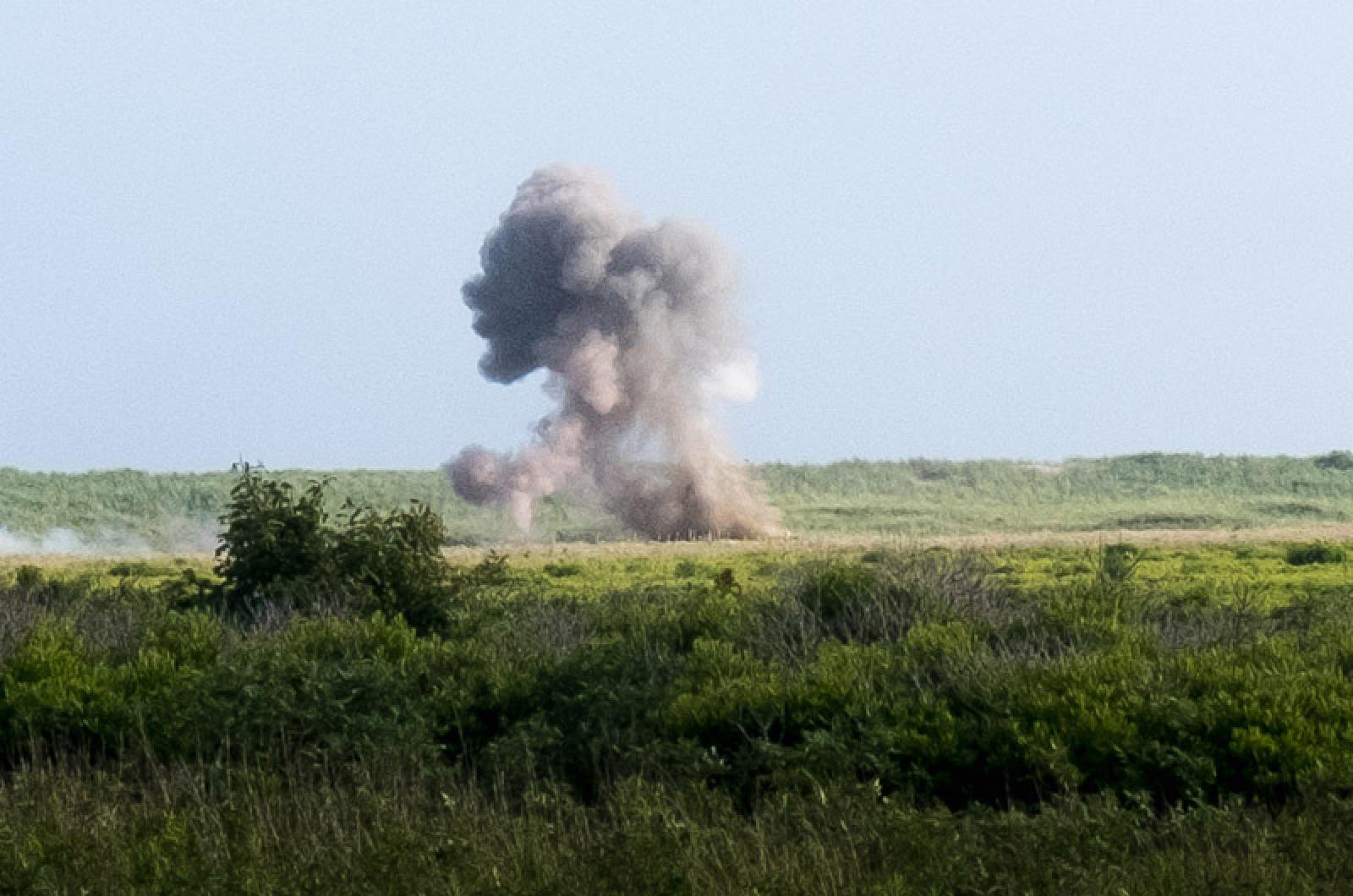The Massachusetts State Police bomb squad, the West Tisbury fire department and a U.S. Navy explosive ordnance disposal unit based out of Newport, R.I. gathered at Long Point Wildlife Refuge Wednesday to dispose of a 100-pound World War II photo flash bomb.
The 70-year-old bomb was designed to light up the sky, illuminating the landscape for nighttime aerial photography. It was left behind during training that took place on the Island from August of 1943 to July of 1947.
The detonation was expected to produce a 500-million candlepower burst of light. (For reference, spotlights at homes generally clock in at about two million.)
The Navy unit prepared to detonate the bomb in a shallow pit to help contain shrapnel from the explosion. A berm was built around the hole for the same purpose.
A small audience gathered Wednesday evening at a safe distance to watch the detonation. They would receive three fires in the hole as warning and a signal to look away before the anticipated blinding flash. But, officials told the crowd, you’re all big boys here. The implication was that looking could be your mistake to make.
The Army Corps of Engineers has been working to clear remaining ordnance from Cape Pogue for over a year now. Work at Tisbury Great Pond began two months ago. Wednesday’s 100-pounder was the site’s first big find.
“Let’s just say it’s been a very interesting year and a half,” said Chris Kennedy, superintendent of The Trustees of the Reservations for Martha’s Vineyard. “It’s been a lot more munitions than we’d ever believed.”
He added that beachgoers needn’t worry about their safety at Long Point, though there is likely more ordnance in the area. “As long as it’s underground, it’s not going to detonate,” he said.
The site has been surveyed by an aerial magnetometer. The Army Corps of Engineers used this data to create a map of so-called anomalies for GSI Pacific, the bomb removal contractor for the Corps, to investigate.
The photo flash bomb was unearthed by GSI Pacific on Friday. It was discovered three feet underground in a grassy dune about 300 feet from the beach and 100 feet from Tisbury Great Pond.
“This was an anomaly that turned out to be not an anomaly, but a bomb,” Mr. Kennedy said.
Not every riparian landowner on Tisbury Great Pond is happy about the Corps’ aggressive steps to detonate old bombs on barrier beaches, however.
A lawsuit pending in Suffolk superior court pits the Corps and the Massachusetts Department of Environmental Protection against Tsissa Corp., a large West Tisbury landowner who has objected to the Corps removing unexploded munitions during the summer shorebird nesting and fledging season.
The government has sued Tsissa for immediate unrestricted access to its property; Tsissa has agreed to access only if the bomb remediation work is not done between April 1 and August 31 to protect endangered birds.
The case is scheduled for hearing in Boston on July 13.
On Wednesday, the bomb required removal assistance due to its large size and potentially highly flammable contents.
When the time came for the potentially blinding detonation, smartphones offered a workaround for those that wanted to see the action. Viewers averted their gazes and aimed cameras at the horizon to record the scene for later perusal.
The announcements came over walkie-talkie. A loud explosion, a moment’s hesitation, and scan of the horizon followed.
A smoke cloud dissipated above the dunes. An osprey glided overhead.
The crowd began to review the footage they had captured. There was no moment of bright white brilliance. The contents of the bomb had not held up through their long rest.
And with that, summer started at Long Point, partly with a bang and partly with a whimper.









Comments (1)
Comments
Comment policy »